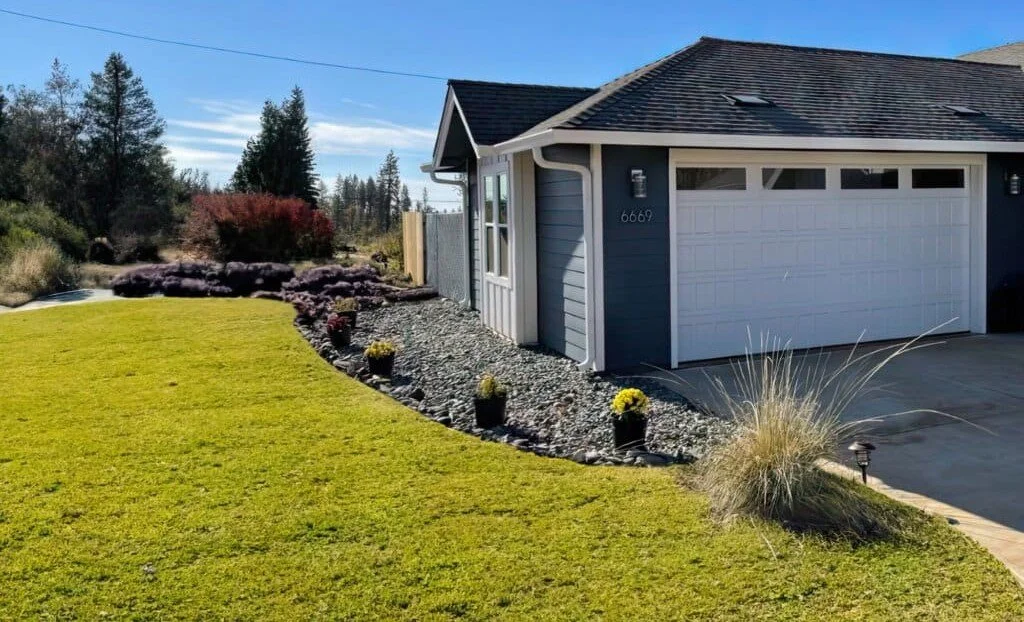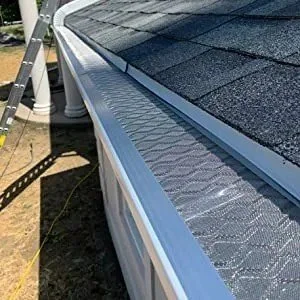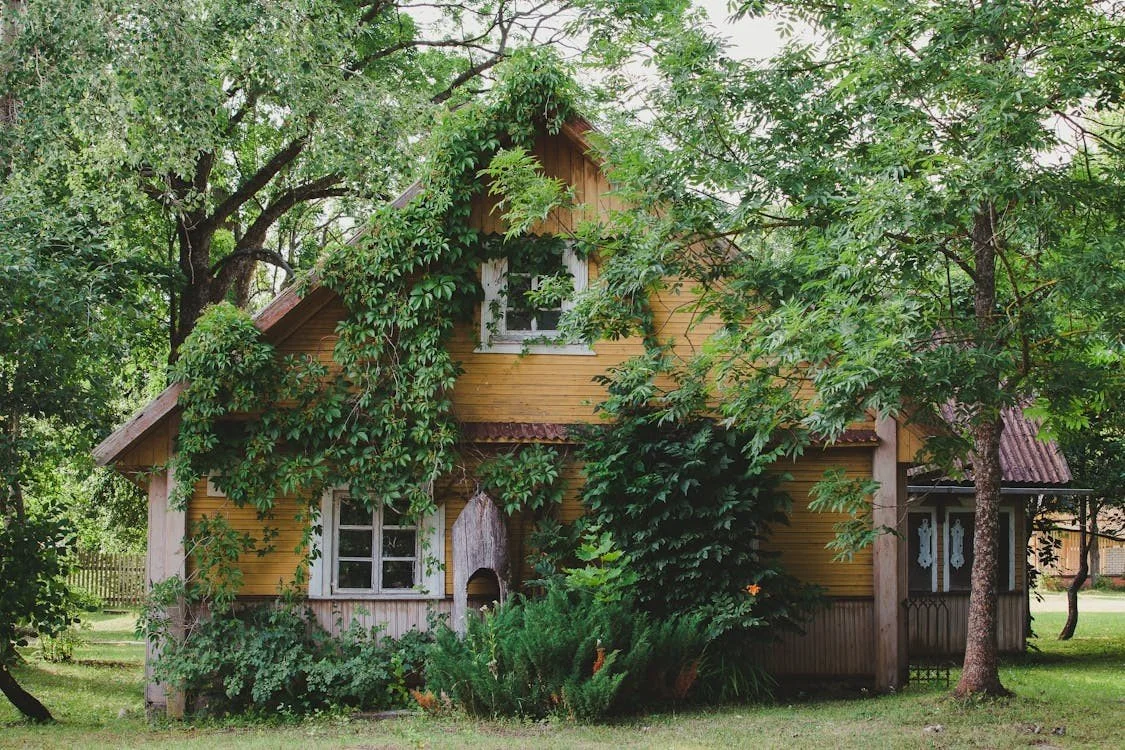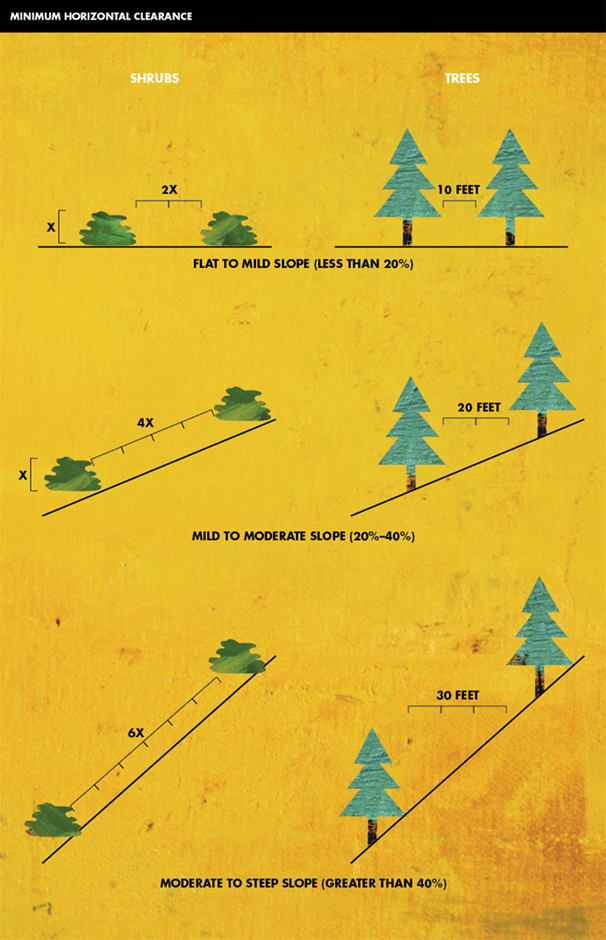Top 5 Wildfire Risks We See
(And How To Help Fix Them)
At Matrix Fire Solutions, we’ve seen a lot in our combined decades of firefighting and wildfire mitigation work. While every property is unique, some of the same wildfire risks tend to show up again and again — and they’re often things people may not even realize are a problem. The good news? Most of them are fixable! With some knowledge and awareness, a little time and the right plan, you’ll have a great start at becoming prepared for wildfire!
Here are the top five vulnerabilities we encounter on California properties — and ways to address each one.
1. Ignitable Materials Too Close to the House
The Risk: Wood piles, mulch, combustible plants, patio furniture — anything that can ignite from an ember landing on it - stored right up against the home, deck, or fence.
Why It’s Dangerous: Embers can travel over a mile ahead of a wildfire. If they land on and ignite combustible items near your structure, that fire can easily spread to your home.
Some Ways to Help Fix It:
a. Create a “noncombustible zone” 0–5 feet from all structures.
b. Use hardscaping like gravel, stone, or concrete. Even bare dirt will work if maintained.
c. Relocate or replace flammable decor, doormats, and containers to areas outside the first 5 feet.
d. Store wood piles at least 30 feet away.
2. Clogged Gutters and Leaf-Littered Roofs
The Risk: Accumulated leaves, needles, and debris in gutters and roof valleys.
Why It’s Dangerous: Embers often land in these areas and ignite dry debris — right at one of the most vulnerable parts of your structure.
Some Ways to Help Fix It:
a. Clean your gutters and roof regularly during fire season.
b. Trim back overhanging branches to limit leaf buildup.
c. Consider installing approved ember-resistant gutter guards.
3. Improperly Screened Vents and Openings
The Risk: Improper screens, gaps, or screens with holes in attic, crawlspaces, and eave vents.
Why It’s Dangerous: Embers can enter very small openings, potentially igniting insulation, debris, or stored materials inside. Improper vents and gaps between vents and the building (among other places) can allow embers in. This creates a risk of ignition inside, under or above your living space.
Some Ways to Help Fix It:
a. Seal all cracks and gaps that embers could enter through.
b. Replace weathered or damaged vents or screens.
c. Install ember and/or flame-resistant vents - 1/8” metal mesh or approved baffled vents (as shown here).
4. Overgrown Vegetation and Poor Plant Spacing
The Risk: Dense, continuous vegetation or “ladder fuels” that would allow a ground fire to climb from the ground up into trees and structures. Or a fire in shrubs or tree canopy to ignite adjacent trees or structures.
Why It’s Dangerous: If vegetation is not maintained and properly spaced - both vertically and horizontally, fire can ignite and spread faster and hotter making it difficult, and often unsafe, for firefighters trying to protect your home. It can also create intense radiant heat which can ignite other combustibles or your house.
Some Ways to Help Fix It:
Horizontal Spacing Guidelines
a. Create spacing between shrubs, trees, and structures (both vertically and horizontally).
Vertical Spacing Guidelines
a. Create spacing between shrubs, trees, and structures (both vertically and horizontally).
b. Maintain a lean, green, and clean landscape in Zones 1 (5–30 feet) and 2 (30–100 feet).
c. Remove dead plants, grass, and debris regularly.
d. Choose fire-resistant plants where possible, especially closer to your home.
5. Fences and Attachments Can Act Like Fire Highways
The Risk: Wooden fences directly attached to the home.
Why It’s Dangerous: Wood fences attached to your home can act like fuse lines, allowing fire to travel from a neighbor’s burning home or property, straight to your home.
Some Ways to Help Fix It:
• Use noncombustible materials (metal or masonry) for the first 5 feet of fence attached to a structure.
• Maintain proper defensible space around and under your fence.
Final Thoughts
Wildfire risk isn’t just about location - it’s about preparation. The good news is that most of the top risks we see can be mitigated with thoughtful, science-based steps. And you don’t have to do it alone. At Matrix Fire Solutions, we help California property owners understand their risks and take smart actions to improve their wildfire readiness.
Want to know how your property stacks up?
Schedule a Wildfire Risk Assessment today — We can help you:
Know your vulnerabilities and
Make the changes that make a difference










